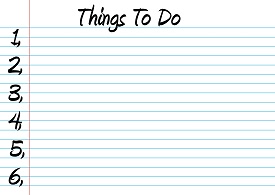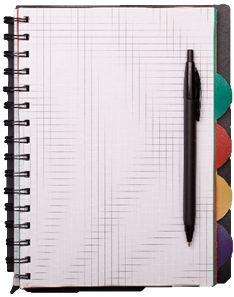
Workplace Stress - Quick Guide
Workplace Stress - Introduction
Workplace Stress, also known as Occupational Stress is the stress that one gets from working at his job. Chief causes are unrealistic short-term goals, unexpected responsibility-sharing, and high expectations. While the job itself might not be stress-inducing, the way it is done and the working environment are crucial factors in creating stress.
Workplace Stress is also related to pressure from seniors and peers and in the absence of support from colleagues. In the US, an overwhelming number of people identify having no control or say in their workplace as the biggest cause of stress in their lives. When workplace stress is not controlled and properly channelized, it can create a lot of coping issues and unreliability.

According to The Random House Dictionary, Stress can be defined as physical, mental, or emotional strain caused by a situation or an occurrence of an event. The word stress is derived from a Latin word which means distress. We all face situations where we are so stressed out and feel so unbalanced that we tend to overlook all tasks that we know are important because we cannot manage a single thing.
Stress is different for different people
Stress is different for different people, so it is important to address stress differently. For example, you are too busy to schedule one hour for exercise, so simply try taking stairs to your office instead of lift, if your office is near to your house try walking. Instead of treating things like they are adding more too your stressful life try replacing it with things that soothes you.
It is good to solve your problems on your own, but there are cases when you might need a hand or two to help you get over the stressful events. It is always recommended to get help from third party to whom you can look up to, share your problems and get some help.
Now the question is where to ask for help? The first place to start is your workplace. Now-a-days companys offer employee assistance programs to help them get over stressful events. In case your company is not one of them, try some hotlines in your area which provide these services.
Defining Workplace Stress
Sometimes it may be difficult to cope with workplace stress, but the skills of handling stress changes from person to person. The cause of your stress and your approach to handle it may be way different from that of your friend.
Generally, we think that stress is related to something negative, but we don't have to look at it that way. Some stress is helpful, actually to drive people towards job completion. As you may observe, stress in itself can be used for positive purposes. This type of stress is known as Eustress. In simple words, Eustress is the stress that leaves a positive effect, or is motivating in nature. It results in a positive outcome. Such stresses help people in getting good performances.
You can relate to this type of stress if you are familiar with the following scenarios −
- Running and winning a close race.
- Riding a big roller coaster ride.
- Watching a scary movie.
All these situations cause physical, emotional and mental strain, but these pressure scenarios release positive emotions and makes us happy. This is a form of stress too. So, stress is not always negative; we have positive stress too which makes our life dynamic, unlike the lives that people without any tension or stress live- dull, monotonous, and boring.
These kinds of stress are completely different from the stress disorders that people get exposed to in their professional lives. Workplace Stress is created from working in unsuitable and improper conditions and from working in an ill-suited job.
Problems Caused by Stress Factors
Stress factors have the ability to induce a range of disorders, including psychological issues like depression, anxiety, etc. They also are the cause of emotional instability like irritation, dissatisfaction, tension and fatigue. In addition to that, workplace stress can cause changes in behavior and cognitive functioning like increased levels of aggression and concentration-lapses.
In situations where stress doesnt cause any psychological or physical damage, it still accounts of big drops in productivity. Stressed-out employees yield poor performances, are less receptive, and engage in higher absenteeism. These conditions lead to deviant behavior, health-related expenses and increased chances of workplace injury.
The ability of an employee to cope with the number of hours expected of him to work, rate of production, performance standards, volume of work, and the deadlines that he is expected to deliver his output, all play a major role in creating stress. Doctors have observed a deeply negative impact on mental health of people who work in night shifts.
Workplace Stress - Five Models
Job stress is heavily associated with workplace environment. Places like New York, Los Angeles, and London among many other municipalities acknowledge the strong relationship between job stress and heart attacks. Because workplace stress is the result of many complex interactions between an individual and a large systematically-operating organization, there are numerous theories propagated to explain the relation between both.
According to experts, there are five models that explain workplace stress, which are −
- Person Environment Fit Model
- Job Characteristics Model
- Diathesis-Stress Model
- Jobs-Demand Resources Model
- Effort-Reward Imbalance Model
Let us now discuss each of these models in detail.
Person Environment Fit Model

According to this model, a person starts to feel stress in a job where his aptitude, skills, abilities and resources are in-line with the necessities of their job. The job profile he is operating in should be in accordance to his needs, knowledge and skills-sets.
If these needs are not addressed, then it makes these employees misfits in that domain, which results in lagging behind in performances and not meeting management expectations. These employees end up with lower productivity, face isolation and resort to denial, as a defense mechanism.
Job Characteristics Model

This model proposes that for an employee to be successful in any job, he needs to have some degree of autonomy and he should be able to give a feedback which is heard. Such conditions result in job enrichment and employee loyalty. The absence of these factors can cause work disassociation and drops in productivity.
This model also specifies that numerous talented professionals lose their aptitude towards the same work that they had once been very interested in, and were good at. The main reason behind this was the attitude of the management.
Diathesis-Stress Model

This model makes a distinction between stressful job conditions and individual strains. Strains can be mental, physical or emotional and most of the times, these strains change from person to person.
The significant strains among them are −
- Excessive Workload
- Disagreeable Workplace Environments
- Lack of Autonomy
- Difficult Relationships with Coworkers
- Lack of Career Growth
- Low Chances of Personal Growth while Working and
- Harassment from Management.
Jobs-Demand Resources Model

This model posits that workplace stress can be associated to the difference of job demands and resources. Experienced at managerial levels, it is caused when a bully management expects managers to deliver high results with low resources.
In other words, there is a severely skewed ration between job demands and job resources. Even good managers cannot deal with this stress and end up stressed.
Effort-Reward Imbalance Model

This model focuses on the relation between efforts and rewards. When employees put in hard work, they expect management to reward their efforts. In absence of any such reward program, the employees get demotivated and underperform.
It is not enough in todays world to expect good output from employees as a part of the job. Companies that think they are entitled to get good output from employees just because they pay them, need to realize that it is not paying, but compensating them for their time, i.e. the employees could have done something way more productive with the time they spend in the company.
Handling Stressful Situations
There is a famous saying that when two or more people are about to cause an undesirable situation, then the smart guy among them can respond in the following four ways −
He should first try to avoid the situation while if he can.
If things have moved well beyond that point, then he could attempt to alter the situation by channeling the conversation towards something more suitable.
If that isnt an option anymore, then he may change his behavior to suit the situation.
If all the above three options have been declared null and void, then he has to prepare himself and take steps to face the worst case scenario, which is accepting the situation and its consequences.
These four steps also tell us how people have tried over the years to find a way of dealing with stressful situations. People tend to blame a different world, a changed time, different activities, etc. for increase in stress. However, stress has existed since the time people have started working for compensations.
Many people employ the same four tactics to handle stressful situations, however, they dont realize that they need to follow the same sequence too. Most of the people keep meek and accept the consequences first, and later retrospect why they didnt try and avoid the situation in the first place. In scenarios where avoiding the situation isnt an option, things could have been channelized to something else.
Altering the Situation

Many people try to justify their age-old detrimental habits by saying, A leopard cant change its spots, but wed like to disagree. People just dont have bodies that work sufficiently well without seven hours of sleep, the same way people arent just resistant to the ill-effects of alcohol and other intoxicating substances.
It might so happen that these peoples bodies have conditioned themselves to the unhealthy routine, however it doesnt mean that their bodies are thriving because of their schedules; their bodies are at best, trying to perform as efficiently as possible in a negative environment.
There are many ways to handle stress, and often a lot of ways in which we can change our approach towards that situation, or at times, change the situation to make it less stressful.
The First A
As we have mentioned earlier, the first approach to handle stress is to simply alter or change it. This can be done by the following ways −
- Think something positive; this will help you have a positive attitude.
- Do something creative and unique.
- Improve specific skills as per the situation's demand to handle the situation.
Here are some examples that will help you understand this approach −
You find visiting a doctor stressful. You decide to think positively about it- If I get this over with, it will be done for a whole year. You also decide to bring along some relaxing music to help you cope with the appointment and distract you.
You find talking to your teacher stressful because they might scold you. You decide to think positively If I interact now, my concepts will be clear and I can improve my grades.
If the traffic has become heavy on your evening commute, you decide to take a different route or you start little early.
Identifying Appropriate Situations
Altering stress is one of the most positive steps one can think of. When you control the situations and change it to something less stressful, you are taking power in your own hands by not letting the situation dictate your actions. But this step cannot be used always. There might be situations where −
Altering the situation to a situation that is not safe. For example, you find wearing helmet makes feel stuffy, so you might not want to wear it, which is a grave mistake.
Altering the situation by transferring the stress to someone else, which lets face it is just mean.
While altering situations, it is important to know whether you alter it to appropriate actions or the inappropriate ones. Make the efforts worth a long-term benefit. Before doing something, remember to involve everyone and discuss with them whether your new actions are appropriate and helpful.
Avoiding the Situation
Previously we discussed about controlling the situation and being in power to make situations lesser stressful. Here, we will be adopting a different approach to handle stressful situations by completely avoiding them.
The Second A
The second A stands for Avoid. If eating lentil-sandwiches gives you indigestion and causes you stress and embarrassment at work, dont eat it! This A deals with identifying the simple things that you stress about unnecessarily and eradicating those items from your life. This A is suitable in situations if −
- Repercussions are non-existent or extremely minor
- Other people are not negatively impacted
- If the task is of very low priority
- If returns arent worth the effort.
Word of Caution
It is not advised to use this approach, if avoiding the situation leads to more stress in future, like avoiding a doctor's appointment. Also, you shouldnt avoid situations to shift your stress to someone else, which will negatively impact your relationship with him.
A positive strong tool to avoid stressful situations is the Positive No. This tool helps you to say no in such a way that the situation is controlled in a constructive and assertive way. Initially, people might be taken aback by your approach, but they will realize that you have an equally important task and will adjust their work-styles to suit yours.
Accepting the Situation
Benjamin Franklin once said, In this world nothing can be said to be certain, except death and taxes. Our last but not the least A will help us manage things that cannot be changed.
The Third A
Our third A will help us handle things which needs to be completed, even if we like it or hate it but that cannot be changed. The best thing to do in these cases is to accept the situation and be positive about it.
The third A is all about handling situations which are not in our control and make our life less stressful. We can also use some techniques from first A that is to alter our attitude towards a situation and make it less stressful.
Some examples include −
- Going to the doctor
- Taking a turn presenting a plan instead of passing it off to someone else
- Visiting a relative who is not very pleasant.
Accepting the situation is appropriate when −
- The task cannot be avoided and has to be completed eventually.
- Neglecting it may cause more stress later to you or another person.
Accepting the situation is not appropriate when −
- You are doing things just to please others.
- Neglecting or changing it might reduce your tension than accepting it.
- You are left with no other choice except accepting the situation.
Creating Effective Actions
There are times when people feel that accepting situations as they are, makes them feel helpless and powerless, but this is not true. The best part is you are learning to accept the situation as it is and are able to deal with it rather than avoiding or altering it. Generally, the power of choice helps reduce stress to great extent.
Let's take a simple example which we have discussed earlier. Visiting a doctor for regular checkup instead of neglecting it. If you go ahead to visit the doctor, you could gain things from it, like −
- Understand what your body needs.
- Be assured if you have a healthy life or not.
- More confidence.
Another method to handle unchangeable situations is to look at it in a positive way, negative thinking will never do good and cause more stress in your life rather than solving any problem.
Workplace Stress - Getting a Low-Stress Life
In todays world, employees cant work in isolation anymore; everyone is working on everyone elses errands. In such a connected and hectic world, it is impossible to get rid of all stress factors as some come with the occupation, and some are intentionally sought out by people as motivation to complete their work.
Before we start by briefing all the three approaches, we will have a quick look at the basics of a low-stress lifestyle. There are three building blocks which makes low-stress lifestyle possible, which are
- Diet,
- Sleep, and
- Exercise.
There are a lot of stress-reduction programs, but no program could give you a complete lowstress lifestyle if these three basic building blocks are missing in your life.
Eating Properly

Nowadays, people are so busy in their hectic schedules that they completely neglect their health. There is a major health implication between eating whatever you get and eating what is actually healthy. Today people are more concerned about eating something which is readily available and is tasty too.
We tend to rely more on fast-food and online-delivery foods rather than a home cooked meal. Frankly speaking, we might feel we don't have the time or patience to cook after returning from a tiring day at office. Fresh fruits and juices have been replaced by packaged flavored juices, meals have been replaced by ready-toserve items and what not.
But what we never think is how drastically these junk foods are affecting our health. In the age of multi-tasking and finishing things on or before deadline, we forget our first priority is to take care of our own body and health, so that we can focus more on our work.
Exercising Regularly

People tend to work for long hours sitting in front of their computer screen, which eventually affects their spinal cord and induces weight-related issues. After sometime, they suffer from diseases like obesity, cholesterol, problems in spinal cord, etc. So one should always find some time to stay fit. Exercise plays an important role in reducing stress by relaxing our body. Some other benefits of regular exercise are −
It makes you physically strong and active, so you are more resilient to stress.
It helps you to think clearly which limits the harmful effects of stress.
It helps you with emotions; you can control your anger and frustration better.
It can also give you your me time, where you can think of a situation clearly and come up with different ways to overcome it.
One can start exercising by any one of the two ways: the first is thirty minutes per day workout, or three to five onehour sessions per week. If you don't have enough time to exercise, then try to indulge yourself in some activities which you actually enjoy and which will give you some alone time. You can try some of the following ways −
- Take a walk during breaks.
- Take the stairs instead of the elevator.
- Walk or bike to or from office, if possible.
- Instead of sitting, start walking while talking on the phone.
- When watching television, use commercial breaks to do quick exercises.
It is worthwhile remembering that your lifestyle changes when you change your diet, sleep, and exercise. Do not change everything all of a sudden as it may be difficult to adapt to it, but start it slowly and steadily. Always stay focused and see things in a positive way. A positive view solves half of the problems one has.
Sleeping Well
According to the 2010 survey conducted by the National Sleep Foundation in the US, 28% of adults stated that sleepiness interfered with their daily activities every few days of a month. Around 5% of them reported that sleepiness affects their productivity in some way or the other almost every day. About a quarter of adults admitted to have driven home while they were feeling drowsy.
Of the 43% of adults who stated that they had a good nights sleep ALMOST every night; 25% of them, on further questioning, accepted that they meant they got a good nights sleep a few nights a week. The average person needs at least seven hours of sleep daily, but manages to sleep only for six hours. One hour might not sound like a big difference, but over the course of the year thats about 230 hours of sleep the same as not sleeping for almost 10 days a year!
It is very important to have a good nights sleep. Sleep helps your body and mind to relax. Sometimes you need to stop thinking everything and just shut your brain from every single thought that comes to your mind, relax your brain and sleep.
Try the following tips to help you get a good nights sleep:
The bed is for relaxing and sleeping, so dont use it for any other purpose like reading, watching TV, working, etc. It adds to the stress in muscles which prevent sleep. For the same reasons, use only your bed to sleep and not the couch or the armchair.
Your bedroom should be a comfortable place to sleep. Use curtains to keep the light out, dim the lights while sleeping, wear a blanket and dont allow noise or distractions.
Try to set an appropriate and regular bed time; always go to bed at the same time which gives a routine to your biological clock.
A cup of warm milk, a few stretches, a few moments of meditation, a warm bath and quiet music are all great ways to relax, which will help you get a good night's sleep.

Workplace Stress - Reducing Stress At Home
Normally we associate the word routine with some boring or timely schedule, but this is not true. We need a routine to synchronize those elements of our lives which cannot be changed. It helps us spend more energy on worthwhile projects. A routine includes planning meals in advance, making a to-do list, maintaining system for chores. So, in this way you maintain an efficient environment and have fewer things to worry about in your bucket list.
Some of these are −
- Planning Meals
- Organizing Chores
- Using a To-Do List
Let us now discuss these routines in detail.
Planning Meals
For planning meals, you can keep in mind the following points −
Use your weekend to plan meals for the next week. Make a grocery list and go for shopping. Make it a point to include others living in your house in this plan.
In the grocery store, do not get tempted by the fresh arrivals of unhygienic food, stay where fresh fruit, vegetables, meat and dairy are usually kept. Avoid frozen and processed items.
Go for non-processed shortcuts, like pre-trimmed meat, salad kits and pre-grated cheese. If it is difficult for you to store fresh fruits in your house, then go for stocking frozen fruit.
Experiment with slow cookers. They are inexpensive to buy. Also, use inexpensive items which are easy to use and will help you cook meals faster.
Try new things and motivate family members to do so by planning for theme nights like nachos, lasagna or personal pizzas. These are a great way to personalize meals and increase bonding. Make sure you load up on the veggies and go easy on the dough and cheese.
Organizing Chores
When you start planning your meals in advance, you achieve two things −
The first is of course you reduce your stress during the week along with the confusion of what to make for dinner or lunch or breakfast.
The second thing is when you eat better and feel better and you work better.
Organizing chores helps in building and following a routine around chores. Every person above the age of three should help in the household chores. It is not the responsibility of a single person to take care of all the things. So all the people in the house should help in making the chores more palatable.
It is always better to make the do to list together, so that people can be assigned their work and helps with all the things that need to done. Some unpleasant tasks like cleaning the bathroom can be rotated. Younger children can perform tasks like −
- Setting the table
- Making their bed
- Sorting laundry
- Feeding pets
- Preparing some parts of meals, like salad kits
Older children can help with tasks like −
- Helping to cook meals
- Helping younger children with their chores
- Loading and unloading the dishwasher
- Folding and putting away laundry
Assigning tasks and performing them on time helps you maintain a clean, orderly household. End of the day, you will have lesser things to worry about and more things to look forward to.
Using a To-Do List

Maintaining a to-do list can help you have things organized and have a low stress life. In fact, we can say a to-do list is one of the most powerful life management tools that is available. The best part is, it is not at all expensive, handy and easy to use. It can be personalized for home or work; one can create it for oneself or the entire family.
A to-do list for managing all the household work, planning a trip, for work. It's better to create a Productivity Binder. Try placing a calendar at the front, followed by placing a loose leaf pages in the binder and then tagging each with a date of the month. Make a list of all the work to be taken care of and assign different tasks to all the people in the house.
Every time an item is complete cross it from the list. You can transfer the incomplete items to the next day. Using a binder makes it easy to maintain the family calendar and the to-do list at one place along with the newsletters, reminders, flyers and other important information.
You can keep a calendar at the back of the binder for the coming months, which will make it easy to have a check on the upcoming events and to-do items. When the month ends simply remove the old calendar and place the new one from the back of the book to the front.

One can also opt for a spiral notebook for this approach, as it is easy to carry around. It's better to maintain different journals for work and home, this will help you keep maintain balance between professional and personal life.
You can always use the tools discussed above to help yourself and others to come out of their stressful situations. You can always use the strong bond of your family and friends to get through the tough times and always be there for them when they need you.
Workplace Stress - Stressbusters
Till now, we have discussed the different ways in which we can create stress by reducing various factors of our lifestyle and how to limit the effect of stressful situations. In spite of all these steps, stress will still happen.
It is a part of our lives which we can never change but yes, we can use some tools which would help us keep cool and deal with it. Following are some factors which will help you maintain your calm and handle stress patiently −
- Finding a Sanctuary
- Using Music
- Seeing the Humor
Let us now discuss each of these factors in detail.
Finding a Sanctuary

Sometimes we are so blocked with our situations and stress that we just want to escape to someplace better. A place where we could escape and become free from tensions, duties and everything. Imagine a tropical beach or a place full of greenery and nature's treasure.
It is always said that escaping from situations will always land you in more trouble, so it is better to create a mental place where you can escape for a while, relax and then come back to the reality, it can be a very useful tool.
You can't always opt for a vacation; every time you are stressed but you can always create your own personal sanctuary in your mind. Your mind is capable of doing lots of things. Start by thinking about your favorite place like a forest, tropical island, snowy mountain, waterfall or even your hometown. think of anywhere you want to be right now, a place which would make you feel more relaxed and safe.
Using your senses to capture all the elements of your sanctuary −
- What do you see?
- What does it smell like?
- What does it feel like? (you may be able to feel the cold snow of mountains.)
- What textures do you associate with this place?
You can always create your own physical sanctuary by writing down your observations, feelings, drawing a picture or tucking away a physical piece of it (like a rock or leaf) in your desk.
Using Music

Music is a powerful tool that can help you calm your mind and body. According to experts, rhythm has powerful effects on our bodies. So whenever we want to take a break or relax listen to some calming music like the rain drops or nature sounds or some Jazz and classical these are great ways to elope to a different world free from all the workload and have some me time.
If you are interested in music, then playing some musical instruments can also help you relax your mind and refresh your mood. It relieves not just your mental tension but also physical tension.
Even if you are not good at playing instruments you can always put on your favorite song and sing with it, doesn't matter how you sing. This will definitely cheer you up.
Seeing the Humor
Humor can be a great stressbuster. It is a proven fact that a good belly laugh helps you handle high blood pressure, limits hormones created by stress, boosts the immune system and creates a sense of wellbeing and happiness. Following are some points that need to be taken care of when using humor as stress relief.
Reading a funny story or joke or watching a comedy show can be a great way to make you laugh.
Place a humorous calendar at your desk which will make you laugh at hand, especially if it is the page-a-day type. But remember to use the one allowed and appropriate for your office.
It is difficult to see humor in a stressful situation, but instead of panicking try imagining the situation as a third party, you might get your solution.
Having a good time with friends and family members is also a good way of cheering your mood.
Workplace Stress - Reducing Exercises
The more you are stressed the more the effects increase, so longer you are stressed higher is your stress level. Following are some ways to reduce the impact of stress on your body and mind as well. Mental stress can always have a negative impact on your body like −
- Muscle tension
- Headaches
- High blood pressure
- Insomnia
- Depression
- Obesity
- Digestive problems
- Increased susceptibility to illness
- Increased risk of heart attack and stroke
Soothing Stretches
Some stretches can always help you release tension from your body and relax a bit. One should try doing stretches several times a day to prevent muscle tension and feeling of stress.
Make sure to visit your doctor once before indulging in any physical activity, especially if you already have some health problems.
Neck Roll
This is a simple yet powerful exercise that helps you relieve stress, the procedure of neck roll is, let your chin hang down to your chest. Next, slowly roll your head to your left side, so that your left ear is near your left shoulder. Roll your head backwards and let your head hang as far back as is comfortable.
Now, slowly roll your head to the right, so that your right ear is near your right shoulder. Repeat this process of rolling your head until your chin is once again hanging to your chest. Now, repeat the process, but go in the other direction (so that you begin by rolling your head to your right shoulder.)
Shoulder Shrug
For this exercise start by relaxing your shoulders. Now, slowly shrug towards the front of your body and upwards. Next, shrug your shoulders down towards the back of your body. When your shoulders are back in their natural position, relax, and then repeat the exercise in the opposite direction. This can also be done by a masseur and will certainly add to the relaxation.
Side Stretch
Start by standing with your left hand on your left hip. Now place your right hand straight out so that it is perpendicular to your body. Slowly stretch your right hand over your head, to the left, and bend to the left at the waist as far as is comfortable. Stretch for a moment, and then slowly return to the standing position. Repeat for the opposite side.
Lumbar Stretch
Stand and place both hands in the small of your back. Arch your back slowly, feeling the stretch. Repeat three times. It's better to start these exercises slowly and regularly. It is always recommended to mix deep breathing; we will brief about this topic straight away.
Deep Breathing
Deep breathing is the best method to relax your mind and soul. The key to deep breathing is breathe in through your nose and then breathe out through your mouth. Try counting slowly as you do this. Each breath should take ten to twenty seconds. With practice you will be able to take longer breaths. The advantages of deep breathing are as follows −
- Reduction in blood pressure
- Reduction in muscle tension
- Boost in metabolism
- Clearing of the mind
- Boost in endorphins (our natural painkillers)
Whenever you are in stress try deep breathing this will help you maintain your cool and prevent your body from the negative impacts of stress as stress leads to breathing faster which makes your body work harder. So, whenever you re stressed just sit down, close your eyes focus on your breathing and slowly elope to your personal sanctuary.
Tensing and Relaxing
It may sound strange but creating tension is a relaxation technique, only if you know how to relax later. Let's make it little clear, close your fingers towards your palm and press it as much as possible. Now slowly open your fingers, you will feel the tension evaporate from your hands and fingers. For maximum effect mix deep breathing with this tensing and relaxing.
Given below are some examples −
- Scrunch your eyes up
- Curl your toes towards your shins
- Make a big frown and then smile
- Tense your abs as tight as you can
You can also try tensing yourself from your toes to all the way to your head and then relax from your head to your toes. The key to this is start slowly, practice it, do not pressure yourself too much and try mixing it with deep breathing.
Meditation

The best way to understand yourself, calm your mind and know yourself better is through meditation. It is an ancient art that helps you move your mind to a deeper state of awareness by relaxing it.
There are many religious and non-religious methods of practicing meditation. some of the general forms of meditation include lying comfortably relaxing all the muscles in your body and deep breathing or sitting straight with closed eyes and focusing on your breathing.
This is the best way of relaxing your mind and body, cleaning your mind and having a positive attitude towards everything. It is recommended to explore the comfortable pose for meditation through internet or consult a yoga teacher.
Workplace Stress - Handling Stressful Events
So far we have discussed about different ways and techniques that will help you manage stress and reduce it in everyday life, but every time you face some stressful events you have to broaden your mind. This chapter talks about dealing with these major stressful events and what to do when they happen.
Establishing a Support System
Having a support system will always help you to get over any stress. Like support from your family and friends who could at least listen to your problems and try to reduce them or refresh your mind. This may sound silly but some mental support always gives you positivity and motivation. It helps you calm yourself, relax and take some time out.
Creating a Plan
Yes, that's right make a plan, when in stress you sought to mix everything and finally end up with incomplete work. It is better to make a plan that will help you have some sense of control and you could complete the work step by step. When you have a plan, you get a feeling that at least you have done something and you have power over the situation.
While you plan something make sure you include the following things −
How can I maintain a healthy lifestyle (with appropriate amounts of diet, sleep, and exercise during this period?
What changes will I need to make to my lifestyle?
How will my routine help me during this period?
How might my routine change?
How can I use the triple A approach to handle this situation?
What relaxation techniques might be appropriate?
What support systems can I rely on?
Creating a Stress Log
Maintaining a stress log can help you analyze your major stressors and it can help you identify trends in those stressors. After you identify the reason behind your stress, it will ultimately help you in identifying the cause of stress that can help you reduce the scope with stress.
Generally, a stress log includes −
What happened?
When did it happen?
Where did it happen?
How high was my stress level, on a scale of one to ten? (1 = Not Stressed, 5 = Moderately Stressed, 10 = Close to a nervous breakdown)
How did I feel?
Why did this event cause me stress?
What did I do about it?
What would I like to do differently next time?
It is better you copy this form to a spiral notebook or a three ring binder to create a stress log, you can always alter it according to your needs. Refer to the steps given below to maintain a stress log.
Week One Recording Events
The first step for maintaining a stress log is to collect information. The first stage of using a stress log is to gather information. Every time you are stressed or anxious note it in your stress log, maintain it for seven days at least. It is better to maintain a journal every night and conclude it by all activities of your day and stress related feelings.
Week Two Identifying Stressors and Creating a Plan

After the first week, sit with your journal and a blank piece of paper. Now rate all your stressful events on the scale of one to ten. Then write the most stressful events you have faced in the entire week. Then write down those events which caused stress frequently.
Complete this by adding those events which actually caused you stress, but you forgot to mention it in the log. When the first week is over, sit down with your journal and a blank piece of paper. Finally, you will be able to determine the major stressors and create a plan for each.
Things which you might consider including in your stress log −
Which A (Alter, Avoid, Accept) would be the best in coping with this situation?
How changing lifestyle habits (in diet, sleep, exercise, routine, and organization) can help you relieve stress?
What relaxation techniques could help me cope with this stress?
What resources (like support systems and outside help) can help me reduce this stress? or
What will my final plan look like?
To be successful with your stress management, it is better to start with small goals that could be easily achieved over a period of time. If you find it difficult to determine a particular stressor, try talking to your friends and family as they might be of help to you.
Week Three Creating New Habits

This is the best part of the program. Put all your plans into action. Take small parts of your stress management plan at a time and add them into your life. Experiment with all the parts for a while to get the best part which suits your lifestyle.
In case, if it doesn't work out, make a note of your efforts and move ahead for a different plan. Make it a habit to add new tools and habits into your lifestyle in this worksheet for stress management.
This note should include the following −
What was my stress level the last time I reviewed my plan?
What is my stress level now?
What has changed?
What stressors have been added to my life?
What stressors have been removed from my life?
How should my plan change?
What stress management techniques have been working for me? What techniques have not been working? How should my plan change?
What is my plan for the next week?
When will I review my plan again?
At first, it is difficult to maintain a good stress management strategy and act accordingly, but eventually, this will help reduce your stress levels. Gradually you can reduce review to once a month or less according to your convenience. If you feel the events are becoming more and more stressful, then go back to week one and start again.